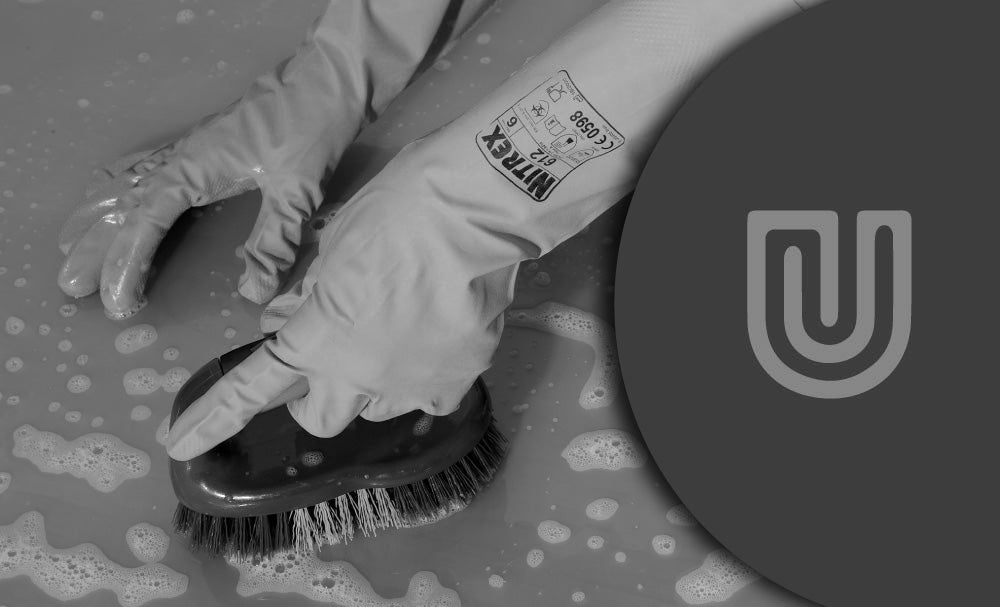The main safety standard that applies to work gloves that protect against chemicals and micro-organisms is EN ISO 374 (previous name EN374). It actually consists of a suite of standards, which has been updated a number of times in recent years.
The main two standards for determining the chemical resistance of glove material are EN ISO 374-1:2016+A1:2018 and EN ISO 374-4: 2019. Chemical resistant gloves that have been certified to these standards have been tested for their resistance to permeation and degradation by certain hazardous chemicals.
The standard under which gloves that protect against bacteria, fungi and viruses are tested is EN ISO 374-5: 2016.
What tests are carried out under EN374?
Gloves are classed as Type A, Type B or Type C, depending on how they perform in tests against permeation by a certain number of chemicals.
Permeation is the process by which a chemical moves through glove material, e.g., nitrile, latex, vinyl, on a molecular level. The permeation test measures breakthrough time, i.e., the time it takes for the chemical to move through the layers of the glove material.
Degradation is the change in the physical characteristics of a glove caused by contact with a chemical. Signs of degradation include flaking, swelling, disintegration, hardening or colour change.
There are six performance levels:
Under EN ISO 374-1: 2016, three samples from the palm of the glove (and, for gloves that are 400 mm or longer, three samples from the cuff also) are tested for permeation and degradation by a certain, minimum, number of chemicals from the following list of 18 substances:
So, for example, all disposable gloves in Unigloves’ PRO.TECT range of heavy-duty nitrile gloves and its Vitality range of examination nitrile gloves are classed as Type C. All gloves that have been tested to the EN ISO 374 standards carry marking that consists of a pictogram of a chemical flask; the type the gloves have been classed as (A, B or C); and a series of code letters indicating which chemicals the gloves are resistant to and therefore can be used with.

Which EN374 gloves should I choose?
When selecting chemical-resistant gloves, it is important to consider the chemicals being used, or that are involved in the task, and the level of protection required. For example, a glove that is resistant to solvents may not be resistant to acids.
In workplaces where exposure to bacteria, fungi and/or viruses is a risk, gloves tested to EN374-5: 2016 should be used. The main testing method to determine how well gloves protect the wearer from such micro-organisms is penetration. It involves testing the glove material for air leaks and water leaks – in other words, for holes. Gloves that offer protection from viruses undergo a separate, additional test, carried out according to ISO 16604:2004 for resistance to penetration by blood-borne pathogens.
Gloves that pass these tests are marked with the following pictogram and bear the word ‘VIRUS’ if they have passed this test – like, for example, the nitrile gloves and latex gloves in Unigloves’ Advanced range.
The Unigloves Nitrex range of reusable gloves has been developed to be extremely comfortable and dextrous, as well as protect against a range of specific hazards. Browse the range for EN374-compliant products that protect against hazardous chemicals and micro-organisms or contact our team to find your nearest distributor.
To learn more about EN standards as they relate to protective gloves, download our Glove EN Standards Guide.

